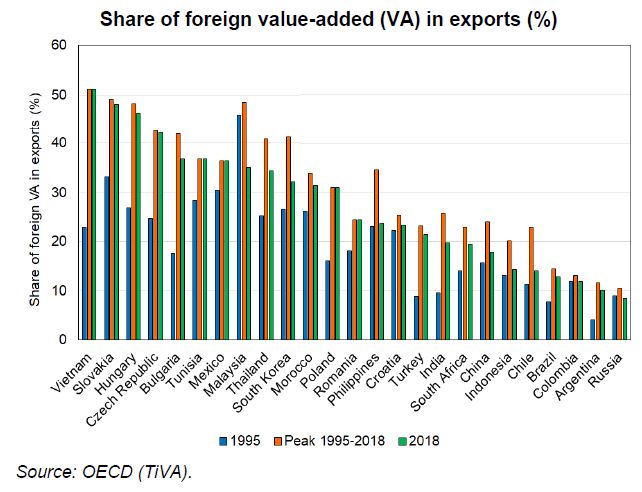Emerging Economies in Global Value Chains
The integration of emerging countries into world trade, particularly China, has disrupted global trade and production chains. The Chinese and Korean examples show that this integration process is taking place in successive phases. Starting with a specialisation based on their comparative advantage, emerging countries then diversify their production before specialising again by moving upmarket and reducing their dependence on foreign inputs.
The integration of emerging countries, particularly China, into world trade has upended the trade landscape and global production chains over the last 30 years.
To illustrate this process, we can look at emerging economies through three distinct, but interrelated perspectives: (i) their level of integration into global value chains (proxied by the import content of their exports); (ii) the degree of specialisation of their exports; and (iii) their share of low-end versus high-end exports.
An analysis of international value-added trade data suggests that emerging countries followed a strategy of integrating into global trade in successive stages. Like China, these countries initially benefited from being specialised according to their respective comparative advantages in global value chains, before diversifying their production and exports and ultimately specialising again as they upscaled their manufacturing capabilities. This latter phenomenon has been accompanied by a movement up the value chain for these sectors of specialisation, a process called re-insourcing by which a country gradually lowers its dependence on the foreign inputs needed to produce such goods (electronic components, machines) by increasing the share of local manufacturing in exports.
Consequently, the relationship between a country's level of integration into global value chains and its level of economic development does not appear to be linear. A trend towards re-insourcing certain stages of production of global value chains is currently under way in several emerging Asian countries, raising the question of what will come next for their integration.
